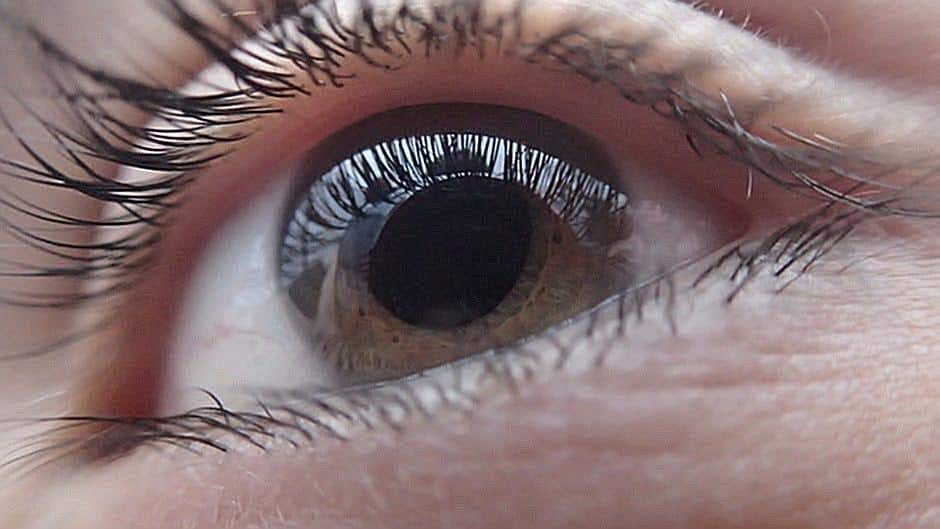Eye whitening drops, also known as artificial tears or redness relief drops, are formulated to relieve eye irritation, dryness, and redness. They are commonly used to treat symptoms of eye fatigue, allergies, and dry eye syndrome. Eye whitening drops are available over-the-counter and can be used on a daily basis.
One of the main causes of red or irritated eyes is the lack of tear production, which may occur due to factors like age, hormonal changes, and medication usage. Eye whitening drops work by adding moisture and lubrication to the eyes, which helps reduce discomfort and discoloration.
Eye whitening drops come in various types, including preservative-free, lubricating, and anti-inflammatory formulas. Preservative-free drops contain no chemical preservatives, which makes them less likely to cause irritation or allergic reactions. Lubricating drops are thicker and designed to provide longer-lasting relief for moderate to severe dry eye symptoms. Anti-inflammatory drops contain steroids to relieve inflammation and reduce redness.
Eye whitening drops should be used as directed by a healthcare professional, and users should avoid overuse or prolonged use, which may cause more problems than they solve. In some cases, eye drops may cause side effects, such as irritation, dryness, or blurry vision, and users should immediately discontinue use and contact their doctor if they experience any adverse effects.
Overall, eye whitening drops can be an effective and convenient solution for managing dry eyes and redness, but it’s important to choose the right formula and use them responsibly to avoid any potential risks or complications.
What Are Eye Whitening Drops?
Eye whitening drops, also known as redness-relieving drops or decongestant drops, are over-the-counter medications used to alleviate redness, swelling, and irritation of the eyes. These drops contain active ingredients that work by constricting the blood vessels in the whites of the eyes, reducing inflammation and appearance of redness.
Most eye whitening drops contain either tetrahydrozoline or naphazoline, which are vasoconstrictors that help reduce redness by shrinking the blood vessels in the eyes. Other ingredients like lubricants, antihistamines, and preservatives may be added to improve the effectiveness and shelf life of the drop.
However, it’s important to note that eye whitening drops only provide temporary relief and do not address the root cause of red eyes. In some cases, they may even worsen the underlying condition, making it crucial to use them only as directed by a healthcare professional.
How To Use Eye Whitening Drops?
Eye whitening drops are generally easy to use and can be applied by anyone over 12 years old. However, it’s crucial to read and follow the specific instructions provided in the package to avoid any mishap.
To apply the drops, wash your hands thoroughly and tilt your head back slightly, then use your fingers to gently pull down your lower eyelid to form a pocket. Make sure the tip of the bottle does not touch your eye, eyelid, or any other surface to avoid contamination.
Next, squeeze the recommended number of drops (usually one or two) into the pocket created by the lower eyelid, then release the lid and gently close your eyes for a few seconds to allow the medication to spread naturally over the eye. Avoid blinking, squeezing or rubbing your eyes after application.
Finally, wipe off any excess solution around the eyes with a clean tissue, replace the cap tightly, and wash your hands again to avoid spreading the bacteria.
Are Eye Whitening Drops Safe?
Eye whitening drops are generally safe to use when used as directed for short periods by healthy individuals. Their effects on the eyes are short-lived and do not cause any lasting damage to the tissues of the eyes.
However, like any medication, overuse or misuse of these drops can lead to adverse effects such as stinging, burning, redness, itchiness, dryness, blurry vision, and rebound hyperemia (where the original redness returns and may worsen after the vasoconstrictor wears off).
Compared to other types of eye drops, whitening drops have a higher risk of causing rebound redness and should only be used for a maximum of three days, unless advised otherwise by a doctor.
What Causes Red Eyes?
Red eyes, also known as bloodshot eyes, are a common symptom of several eye conditions and general health problems. Some of the common causes of red eyes include:
Eye infections: Bacterial or viral infections of the eyes, such as conjunctivitis or keratitis, can cause redness, swelling, and discharge.
Allergies: Allergic reactions to pollen, dust, pet dander, or certain medications can cause eye irritation, itching, and redness.
Dry Eyes: A lack of sufficient tear production or quality can cause eye irritation, burning or stinging sensation, and redness.
Eye Fatigue: Prolonged use of screens, reading or writing, or driving in poor light conditions can cause eye strain, dryness, or redness.
Environmental Factors: Exposure to smoke, dust, wind, or bright lights can also cause redness and irritation of the eyes.
Can Eye Drops Remove Redness?
Eye whitening drops can quickly reduce the appearance of redness by constricting the blood vessels in the surface of the eyes. However, like mentioned earlier, they only provide temporary relief and do not target the root cause of the redness. In some cases, the underlying condition may worsen after the effects of the medication wear off, causing rebound redness and other adverse effects.
It’s crucial to consult an eye doctor if the redness persists or is accompanied by other symptoms like discharge, pain, or vision changes. They can determine the underlying cause of the redness and prescribe more specific treatment options.
How Do Eye Whitening Drops Work?
Eye whitening drops work by constricting the blood vessels in the whites of the eyes (sclera). This reduces the amount of blood that flows into the eyes, which in turn reduces inflammation and appearance of redness.
Tetrahydrozoline and Napazoline are the common vasoconstrictors used in eye whitening drops. They work by constricting the tiny blood vessels in the eyes, blocking the nerve signals that tell the vessels to open up. This causes the vessels to shrink and reduce the amount of blood flowing through them, resulting in less visible redness.
Some eye whitening drops also contain lubricants or antihistamines that help reduce dryness, itching, and other symptoms associated with eye redness.
How Long Do Eye Whitening Drops Last?
The duration of action of eye whitening drops depends on the specific formulation, dosage, and individual response. On average, the effects of most eye whitening drops can last up to 4-8 hours.
It’s worth noting that repeated use of eye whitening drops or overuse can cause the medication to be less effective, lead to rebound redness, or damage the eye’s tissues, leading to dryness and discomfort.
Therefore, it’s crucial to follow the recommended dosage, use them only as directed and consult an eye doctor if the redness persists or is accompanied by other symptoms.
Where To Buy Eye Whitening Drops?
Eye whitening drops are available over-the-counter at most drugstores, pharmacies, and online drugstores. They come in different formulations, brands, and dosages with varying prices. It’s crucial to talk to a pharmacist or healthcare professional before purchasing eye whitening drops to ensure you get the right medication for your specific condition.

What Are The Side Effects Of Eye Whitening Drops?
While eye whitening drops are generally safe when used as directed, they can cause several side effects, especially when used without professional advice or over a prolonged period. Some of the common side effects of eye whitening drops include:
Burning or stinging sensation in the eye
Redness or increased eye irritation
Itching or dryness of the eye
Blurred vision or difficulty focusing
Rebound redness (when the original redness returns and may worsen after the effects of the medication wear off)
Rare but severe side effects of eye whitening drops include corneal ulcers, allergic reactions, and changes in eye pressure that can damage the optic nerve and cause glaucoma.
It’s crucial to consult a healthcare professional if you experience any severe side effects after using eye whitening drops.
Can Eye Drops Whiten Eyes Permanently?

No, eye drops cannot whiten eyes permanently. Eye whitening drops work by temporarily reducing redness and swelling by constricting blood vessels in the eyes’ whites. They do not change the color or pigmentation of the iris or sclera, and cannot reverse any discoloration caused by genetics or other underlying conditions.
As a temporary solution, eye drops can help reduce the appearance of redness caused by allergies, irritations, or fatigue. However, it’s crucial to address the underlying cause of the redness, especially if it’s recurring or persistent.
Do Eye Drops Make Your Eyes Whiter?
Eye whitening drops can make your eyes appear whiter by reducing the appearance of redness caused by inflammation, allergies, or dryness. The vasoconstrictors in the drops work by constricting the small blood vessels in the sclera, reducing the flow of blood to the surface of the eyes and making the eyes appear brighter and more refreshed.
However, eye drops cannot remove permanent discolorations or yellowing of the eyes caused by underlying health conditions, aging, or long-term exposure to environmental factors like smoke or pollutants.
How To Get Rid Of Red Eyes Without Eye Drops?
If you prefer natural remedies or cannot use eye drops due to an underlying condition, several methods can help reduce redness and soothe your eyes. Some of the common ways to get rid of red eyes without using eye drops include:
Apply a warm or cool compress: Placing a warm or cool compress over your eyes can help reduce inflammation, soothe itchy eyes, and relieve dryness.
Stay hydrated: Drinking water and other hydrating fluids can help keep your eyes moist and prevent dryness and irritation.
Take a break from screens: Prolonged use of digital screens can cause eye fatigue, dryness, and redness. Taking regular breaks and adjusting your screen’s brightness and contrast can help reduce eye strain and irritation.
Get enough sleep: Lack of sleep and fatigue can contribute to eye strain and redness. Getting enough rest and maintaining good sleep hygiene can help reduce eye fatigue and redness.
Other natural remedies that may help alleviate redness include cucumber slices, chamomile tea bags, rose water, and aloe vera gel. However, it’s crucial to talk to a healthcare professional before trying any of these remedies, especially if you have an underlying condition.
What Are The Best Eye Whitening Drops?
The best eye whitening drops depend on your specific needs and underlying condition. Some popular eye whitening drops that have been found to be effective for most people include:
Visine Original Redness Relief Eye Drops: Contains Tetrahydrozoline, helps reduce redness and soothe eye irritation.

Clear Eyes Maximum Redness Relief: Contains Naphazoline, helps relieve eye redness, dryness, and itchiness.
Rohto Cool Max Eye Drops: Contains Menthol and provides a cooling sensation that helps relieve eye irritation, redness, and dryness.
It’s crucial to read and follow the instructions provided by the manufacturer and consult an eye doctor before using any eye whitening drops, especially if you have an underlying condition.
Can Eye Drops Damage Your Eyes?
Eye drops can cause several side effects when used without professional advice or over a prolonged period. Overuse or misuse of eye drops can damage your eyes and cause the following conditions:
Rebound redness: Using eye whitening drops for more than three days can cause the blood vessels in the eyes to dilate, leading to prolonged redness and irritation.
Increased eye pressure: Some eye drops can increase the pressure in the eyes, leading to damage of the optic nerve, which can cause glaucoma.
Corneal ulcers: Overuse of medicated eye drops can cause an infection in the cornea, leading to painful ulcers and vision problems.
Therefore, it’s crucial to use eye drops only as directed, avoid sharing them with others, and consult a healthcare professional if you experience any adverse effects. An eye doctor can also determine the underlying cause of the redness and prescribe more specific treatment options.
Conclusion
In conclusion, eye whitening drops are a type of over-the-counter medication used to alleviate the effects of redness and inflammation in the eyes. They work by constricting the blood vessels in the eyes, which reduces the amount of blood flowing through them and consequently minimizes the appearance of redness.
While eye whitening drops may be effective for resolving temporary eye irritation, it is important to note that they are not a long-term solution for eye health issues. Prolonged use of eye whitening drops can actually cause rebound redness or worsen underlying eye conditions like dry eye syndrome or glaucoma. It is always best to consult a healthcare professional before using eye drops, particularly for persistent eye problems, to ensure the right course of treatment is prescribed.
Moreover, it is imperative to handle eye whitening drops with care to prevent contamination and infection. Always follow the instructions on the package carefully, and avoid sharing eye drops with others. If you experience any side effects or unusual symptoms after using eye whitening drops, seek medical attention immediately.
Overall, eye whitening drops can be a useful tool for reducing eye redness and inflammation in the short-term, but any underlying eye health concerns should be addressed through consultation with a healthcare professional. It is important to use them responsibly and seek proper medical advice when necessary to avoid potential complications.
{“@context”: “https://schema.org”, “@type”: “FAQPage”, “mainEntity”: [{“@type”: “Question”, “name”: “What Are Eye Whitening Drops?”,”acceptedAnswer”: {“@type”: “Answer”,”text”: “Eye whitening drops, also known as redness-relieving drops or decongestant drops, are over-the-counter medications used to alleviate redness, swelling, and irritation of the eyes. These drops contain active ingredients that work by constricting the blood vessels in the whites of the eyes, reducing inflammation and appearance of redness.
Most eye whitening drops contain either tetrahydrozoline or naphazoline, which are vasoconstrictors that help reduce redness by shrinking the blood vessels in the eyes. Other ingredients like lubricants, antihistamines, and preservatives may be added to improve the effectiveness and shelf life of the drop.
However, it’s important to note that eye whitening drops only provide temporary relief and do not address the root cause of red eyes. In some cases, they may even worsen the underlying condition, making it crucial to use them only as directed by a healthcare professional.
“}},{“@type”: “Question”, “name”: “How To Use Eye Whitening Drops?”,”acceptedAnswer”: {“@type”: “Answer”,”text”: “Eye whitening drops are generally easy to use and can be applied by anyone over 12 years old. However, it’s crucial to read and follow the specific instructions provided in the package to avoid any mishap.
To apply the drops, wash your hands thoroughly and tilt your head back slightly, then use your fingers to gently pull down your lower eyelid to form a pocket. Make sure the tip of the bottle does not touch your eye, eyelid, or any other surface to avoid contamination.
Next, squeeze the recommended number of drops (usually one or two) into the pocket created by the lower eyelid, then release the lid and gently close your eyes for a few seconds to allow the medication to spread naturally over the eye. Avoid blinking, squeezing or rubbing your eyes after application.
Finally, wipe off any excess solution around the eyes with a clean tissue, replace the cap tightly, and wash your hands again to avoid spreading the bacteria.
“}},{“@type”: “Question”, “name”: “Are Eye Whitening Drops Safe?”,”acceptedAnswer”: {“@type”: “Answer”,”text”: “Eye whitening drops are generally safe to use when used as directed for short periods by healthy individuals. Their effects on the eyes are short-lived and do not cause any lasting damage to the tissues of the eyes.
However, like any medication, overuse or misuse of these drops can lead to adverse effects such as stinging, burning, redness, itchiness, dryness, blurry vision, and rebound hyperemia (where the original redness returns and may worsen after the vasoconstrictor wears off).
Compared to other types of eye drops, whitening drops have a higher risk of causing rebound redness and should only be used for a maximum of three days, unless advised otherwise by a doctor.
“}},{“@type”: “Question”, “name”: “What Causes Red Eyes?”,”acceptedAnswer”: {“@type”: “Answer”,”text”: “Red eyes, also known as bloodshot eyes, are a common symptom of several eye conditions and general health problems. Some of the common causes of red eyes include:
Eye infections: Bacterial or viral infections of the eyes, such as conjunctivitis or keratitis, can cause redness, swelling, and discharge.
Allergies: Allergic reactions to pollen, dust, pet dander, or certain medications can cause eye irritation, itching, and redness.
Dry Eyes: A lack of sufficient tear production or quality can cause eye irritation, burning or stinging sensation, and redness.
Eye Fatigue: Prolonged use of screens, reading or writing, or driving in poor light conditions can cause eye strain, dryness, or redness.
Environmental Factors: Exposure to smoke, dust, wind, or bright lights can also cause redness and irritation of the eyes.
“}},{“@type”: “Question”, “name”: “Can Eye Drops Remove Redness?”,”acceptedAnswer”: {“@type”: “Answer”,”text”: “Eye whitening drops can quickly reduce the appearance of redness by constricting the blood vessels in the surface of the eyes. However, like mentioned earlier, they only provide temporary relief and do not target the root cause of the redness. In some cases, the underlying condition may worsen after the effects of the medication wear off, causing rebound redness and other adverse effects.
It’s crucial to consult an eye doctor if the redness persists or is accompanied by other symptoms like discharge, pain, or vision changes. They can determine the underlying cause of the redness and prescribe more specific treatment options.
“}},{“@type”: “Question”, “name”: “How Do Eye Whitening Drops Work?”,”acceptedAnswer”: {“@type”: “Answer”,”text”: “Eye whitening drops work by constricting the blood vessels in the whites of the eyes (sclera). This reduces the amount of blood that flows into the eyes, which in turn reduces inflammation and appearance of redness.
Tetrahydrozoline and Napazoline are the common vasoconstrictors used in eye whitening drops. They work by constricting the tiny blood vessels in the eyes, blocking the nerve signals that tell the vessels to open up. This causes the vessels to shrink and reduce the amount of blood flowing through them, resulting in less visible redness.
Some eye whitening drops also contain lubricants or antihistamines that help reduce dryness, itching, and other symptoms associated with eye redness.
“}},{“@type”: “Question”, “name”: “How Long Do Eye Whitening Drops Last?”,”acceptedAnswer”: {“@type”: “Answer”,”text”: “The duration of action of eye whitening drops depends on the specific formulation, dosage, and individual response. On average, the effects of most eye whitening drops can last up to 4-8 hours.
It’s worth noting that repeated use of eye whitening drops or overuse can cause the medication to be less effective, lead to rebound redness, or damage the eye’s tissues, leading to dryness and discomfort.
Therefore, it’s crucial to follow the recommended dosage, use them only as directed and consult an eye doctor if the redness persists or is accompanied by other symptoms.
“}},{“@type”: “Question”, “name”: “Where To Buy Eye Whitening Drops?”,”acceptedAnswer”: {“@type”: “Answer”,”text”: “Eye whitening drops are available over-the-counter at most drugstores, pharmacies, and online drugstores. They come in different formulations, brands, and dosages with varying prices. It’s crucial to talk to a pharmacist or healthcare professional before purchasing eye whitening drops to ensure you get the right medication for your specific condition.
“}},{“@type”: “Question”, “name”: “What Are The Side Effects Of Eye Whitening Drops?”,”acceptedAnswer”: {“@type”: “Answer”,”text”: “While eye whitening drops are generally safe when used as directed, they can cause several side effects, especially when used without professional advice or over a prolonged period. Some of the common side effects of eye whitening drops include:
Burning or stinging sensation in the eye
Redness or increased eye irritation
Itching or dryness of the eye
Blurred vision or difficulty focusing
Rebound redness (when the original redness returns and may worsen after the effects of the medication wear off)
Rare but severe side effects of eye whitening drops include corneal ulcers, allergic reactions, and changes in eye pressure that can damage the optic nerve and cause glaucoma.
It’s crucial to consult a healthcare professional if you experience any severe side effects after using eye whitening drops.
“}},{“@type”: “Question”, “name”: “Can Eye Drops Whiten Eyes Permanently?”,”acceptedAnswer”: {“@type”: “Answer”,”text”: ”
No, eye drops cannot whiten eyes permanently. Eye whitening drops work by temporarily reducing redness and swelling by constricting blood vessels in the eyes’ whites. They do not change the color or pigmentation of the iris or sclera, and cannot reverse any discoloration caused by genetics or other underlying conditions.
As a temporary solution, eye drops can help reduce the appearance of redness caused by allergies, irritations, or fatigue. However, it’s crucial to address the underlying cause of the redness, especially if it’s recurring or persistent.
“}},{“@type”: “Question”, “name”: “Do Eye Drops Make Your Eyes Whiter?”,”acceptedAnswer”: {“@type”: “Answer”,”text”: “Eye whitening drops can make your eyes appear whiter by reducing the appearance of redness caused by inflammation, allergies, or dryness. The vasoconstrictors in the drops work by constricting the small blood vessels in the sclera, reducing the flow of blood to the surface of the eyes and making the eyes appear brighter and more refreshed.
However, eye drops cannot remove permanent discolorations or yellowing of the eyes caused by underlying health conditions, aging, or long-term exposure to environmental factors like smoke or pollutants.
“}},{“@type”: “Question”, “name”: “How To Get Rid Of Red Eyes Without Eye Drops?”,”acceptedAnswer”: {“@type”: “Answer”,”text”: “If you prefer natural remedies or cannot use eye drops due to an underlying condition, several methods can help reduce redness and soothe your eyes. Some of the common ways to get rid of red eyes without using eye drops include:
Apply a warm or cool compress: Placing a warm or cool compress over your eyes can help reduce inflammation, soothe itchy eyes, and relieve dryness.
Stay hydrated: Drinking water and other hydrating fluids can help keep your eyes moist and prevent dryness and irritation.
Take a break from screens: Prolonged use of digital screens can cause eye fatigue, dryness, and redness. Taking regular breaks and adjusting your screen’s brightness and contrast can help reduce eye strain and irritation.
Get enough sleep: Lack of sleep and fatigue can contribute to eye strain and redness. Getting enough rest and maintaining good sleep hygiene can help reduce eye fatigue and redness.
Other natural remedies that may help alleviate redness include cucumber slices, chamomile tea bags, rose water, and aloe vera gel. However, it’s crucial to talk to a healthcare professional before trying any of these remedies, especially if you have an underlying condition.
“}},{“@type”: “Question”, “name”: “What Are The Best Eye Whitening Drops?”,”acceptedAnswer”: {“@type”: “Answer”,”text”: “The best eye whitening drops depend on your specific needs and underlying condition. Some popular eye whitening drops that have been found to be effective for most people include:
Visine Original Redness Relief Eye Drops: Contains Tetrahydrozoline, helps reduce redness and soothe eye irritation.
Clear Eyes Maximum Redness Relief: Contains Naphazoline, helps relieve eye redness, dryness, and itchiness.
Rohto Cool Max Eye Drops: Contains Menthol and provides a cooling sensation that helps relieve eye irritation, redness, and dryness.
It’s crucial to read and follow the instructions provided by the manufacturer and consult an eye doctor before using any eye whitening drops, especially if you have an underlying condition.
“}},{“@type”: “Question”, “name”: “Can Eye Drops Damage Your Eyes?”,”acceptedAnswer”: {“@type”: “Answer”,”text”: “Eye drops can cause several side effects when used without professional advice or over a prolonged period. Overuse or misuse of eye drops can damage your eyes and cause the following conditions:
Rebound redness: Using eye whitening drops for more than three days can cause the blood vessels in the eyes to dilate, leading to prolonged redness and irritation.
Increased eye pressure: Some eye drops can increase the pressure in the eyes, leading to damage of the optic nerve, which can cause glaucoma.
Corneal ulcers: Overuse of medicated eye drops can cause an infection in the cornea, leading to painful ulcers and vision problems.
Therefore, it’s crucial to use eye drops only as directed, avoid sharing them with others, and consult a healthcare professional if you experience any adverse effects. An eye doctor can also determine the underlying cause of the redness and prescribe more specific treatment options.
“}},{“@type”: “Question”, “name”: “Conclusion”,”acceptedAnswer”: {“@type”: “Answer”,”text”: “In conclusion, eye whitening drops are a type of over-the-counter medication used to alleviate the effects of redness and inflammation in the eyes. They work by constricting the blood vessels in the eyes, which reduces the amount of blood flowing through them and consequently minimizes the appearance of redness.
While eye whitening drops may be effective for resolving temporary eye irritation, it is important to note that they are not a long-term solution for eye health issues. Prolonged use of eye whitening drops can actually cause rebound redness or worsen underlying eye conditions like dry eye syndrome or glaucoma. It is always best to consult a healthcare professional before using eye drops, particularly for persistent eye problems, to ensure the right course of treatment is prescribed.
Moreover, it is imperative to handle eye whitening drops with care to prevent contamination and infection. Always follow the instructions on the package carefully, and avoid sharing eye drops with others. If you experience any side effects or unusual symptoms after using eye whitening drops, seek medical attention immediately.
Overall, eye whitening drops can be a useful tool for reducing eye redness and inflammation in the short-term, but any underlying eye health concerns should be addressed through consultation with a healthcare professional. It is important to use them responsibly and seek proper medical advice when necessary to avoid potential complications.
“}}]}



